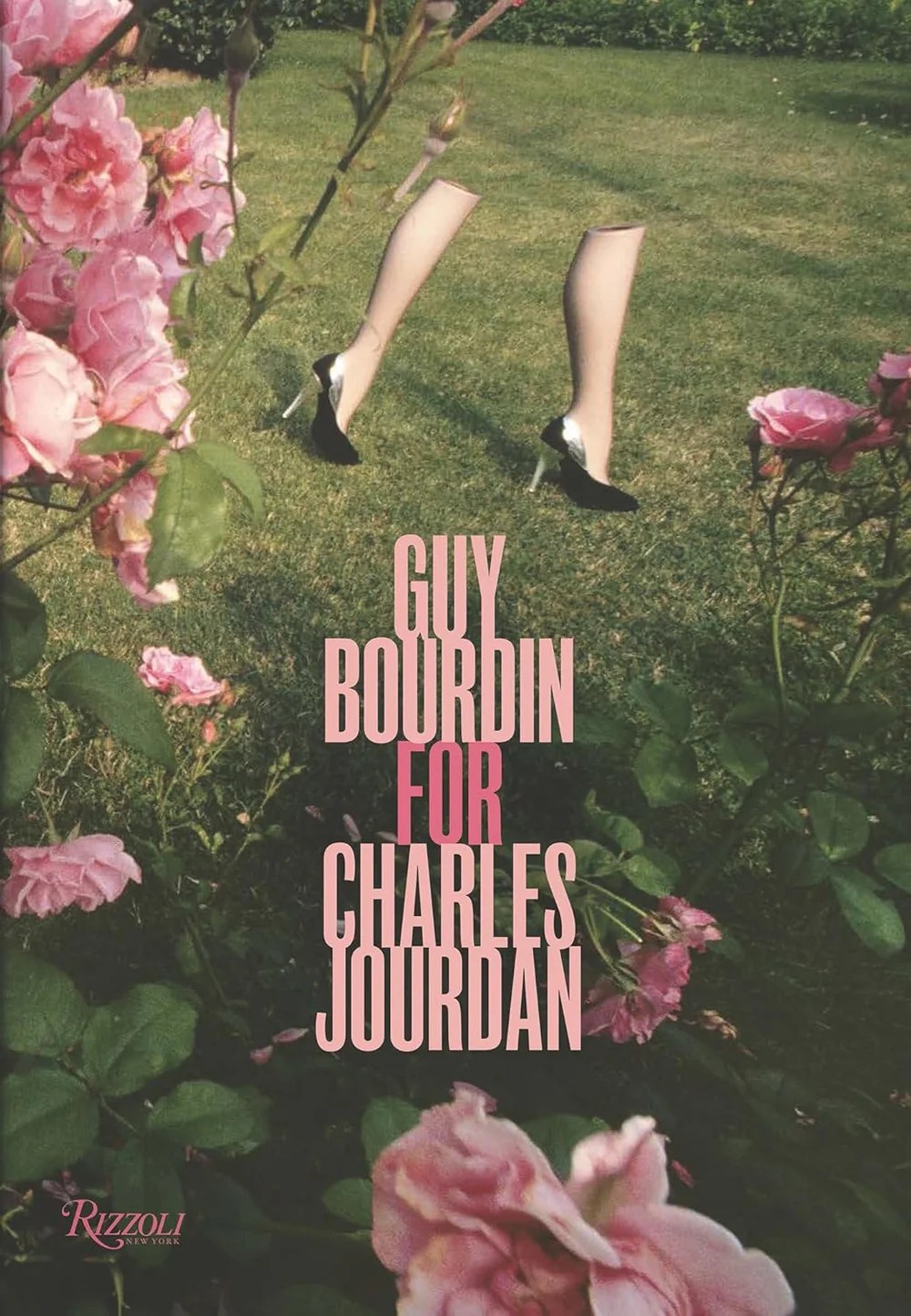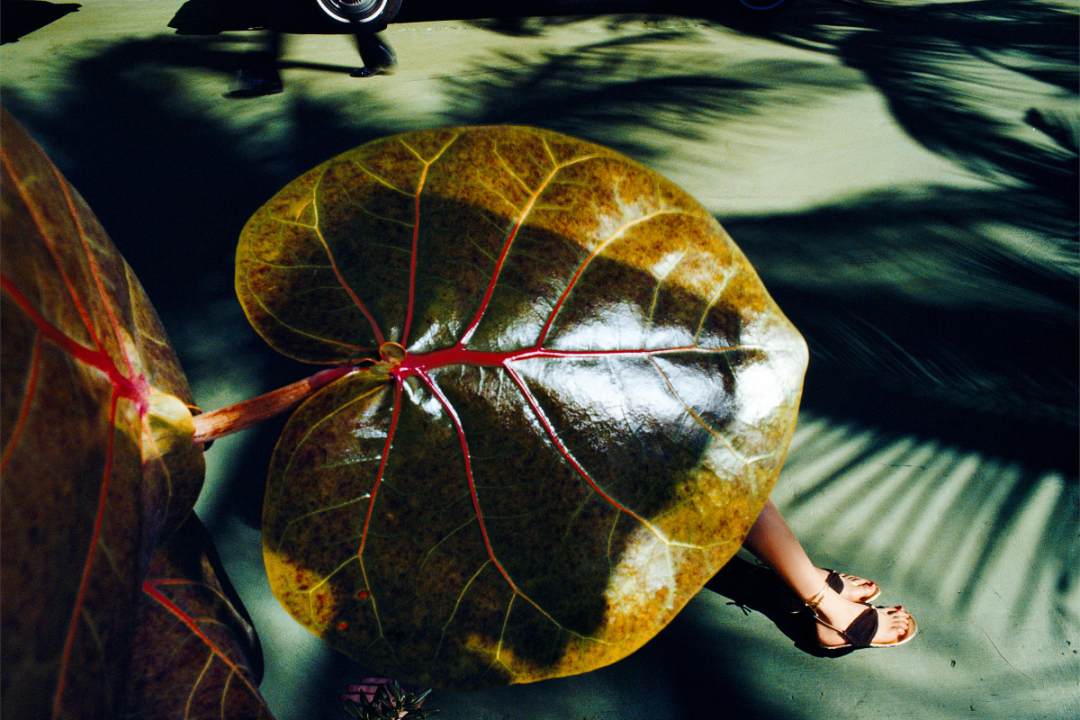Hired by Edmonde Charles-Roux in 1955 at Vogue Paris, Guy Bourdin made his debut for the magazine with a series of hats photographed in front of a butcher’s stall in The HallsThe heads of the calves hanging above the model have been cropped to avoid shocking readers.
Bourdin was quickly entrusted with numerous pages per issue, which marked the beginning of an exceptional collaboration lasting more than 30 years with the magazine.

Photography courtesy of Rizzoli New York
When Francine Crescent [Vogue Paris fashion editor, then editor-in-chief] introduced Bourdin to Roland Jourdan in 1964, the artistic director of Charles Jourdan was already sensitive to the visual provocations that [Bourdin] was spread across the pages of the magazine. Some images had tickled [Roland’s] interest in the way the photographer staged the shoes: the March 1966 cover with a pair of Charles Jourdan heels for Pierre Cardinlong legs in red tights peeking out from a miniskirt; in February 1967, [eight pairs of] A Karl Lagerfeld Charles Jourdan pumps piled in the arms of a naked model. [Bourdin’s photos would expand from the fashion pages until they “took over the magazine.”] In 1966, Vogue Paris said: “It is perhaps because of his love of detail that Guy Bourdin is among the greats fashion photographers. Because he always goes further, he never takes the same photo twice, he surpasses himself. He does not imitate himself: it is we who imitate him.
By hiring Bourdin, the famous shoe brand dared to move away from the stereotypical images of accessories, [then] The years following the Second World War were indeed marked by standardized communication. In brand catalogs, accessories were cropped against a neutral background; photography was simply descriptive, its function being solely to show the product. A pioneer in communication, Charles Jourdan deliberately took the risk of engaging in a policy of visual expression in which the product was no longer at the center of the image. The Charles Jourdan campaigns, entrusted exclusively to Bourdin from 1967 to 1979, were also part of the company’s commercial and marketing audacity and demonstrated its modernity.

Photography provided by © Le Domaine Guy Bourdin
For Charles Jourdan and Vogue ParisBourdin demanded control over the final selection as well as the layout of his images. While the very first campaigns were in square format, he quickly adopted the horizontal format, which corresponded to the double page of the magazine and directly evoked the cinema screen. When he was not working horizontally, he created small sequences that developed a story.
In Bourdin’s work, the frame of photography is almost always closed; there is little or no sky, and we are at ground level. Whether indoors or outdoors, the spaces define a closed world, with no off-screen. In very graphic images, he invents crazy scenes and unusual, sometimes absurd situations. He juxtaposes bright colors with the almost systematic presence of the sophisticated red emblematic of his photographs.
THE 1979 campaignmade from a simple pair of half-legs of shop window mannequins that he carried from one place to another, is the culmination of the cutting and fragmentation of the bodies of the models observed in previous campaigns. This fragmentation of reality is a sign of his taste for surrealism. In his images, the isolation of objects from any human context gives them a reality of their own.

Photography provided by © Le Domaine Guy Bourdin
The reception of Charles Jourdan’s campaigns has exceeded expectations [his] patron but sometimes provoked extreme reactions. They intrigued and sparked debate; some readers did not hesitate to send inflammatory letters to the company to express their disgust, particularly at the advertising that appeared in Days of France dated March 10-16, 1975: a pair of pink shoes overturned on the sidewalk in front of a black car, a woman’s body drawn in chalk on the asphalt and suspected traces of blood all around. [Nevertheless, Bourdin’s photos were eagerly awaited in fashion magazines each month.] “It was as if we were publishing not advertisements but a paperback novel or a comic strip. People were eager to see what would come next,” explains Gérard Tavenas, marketing director. The reception of his work in the magazine Photo was also unambiguous. Every year, portfolios were devoted to his latest campaigns with titles such as “Bourdin or Advertising Without Restraints” and “Advertising Photography as an Art Form.”
Repulsive, Bourdin’s campaigns for Charles Jourdan had a decisive influence on several generations of creators. Even more than the history of advertising, they revolutionized that of photography.
© Guy Bourdin for Charles Jourdan, Rizzoli New York, 2024. All images © The Guy Bourdin Estate. Condensed excerpt from the introduction.
Read this article as it appears in the magazine.
#Guy #Bourdin #Revolutionized #Modern #Fashion #Photography #Artful #Living #Magazine